Right now many patients are not able to receive regular dental care as we are limiting our current treatment to dental emergencies due to COVID-19. Now more than ever is a great time to raise awareness among our patients of the importance of paying attention to how your mouth and tissues feel and to let patients know the importance of contacting our office for an evaluation when an unknown area presents itself. Even though we have limited patient care, we are able to look at lesions using teledentistry. Patients may text pictures to our office cell phone (910) 639-0491 or by emailing pictures to pinehurstdentist@gmail.com.
Common Oral Lesions
Oral lesions are often found at routine dental appointments, at times a surprise to the patient! Many areas are asymptomatic, benign, and not a cause for concern as the majority are traumatic in nature or just a variation of normal. Below are the most commonly seen lesions in our dental practice:
Traumatic/ Irritational Lesions
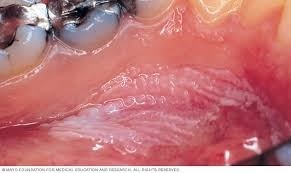
These lesions are usually white (leukoplakia) or red (erythroplakia) and may be created by constant irritation or abrupt trauma like a pizza burn. The chronically irritated areas may be from biting mucosal tissue or rubbing from a dental appliance (denture, broken tooth, orthodontic wire).
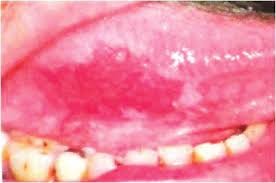
Treatment consists of removing the irritation and evaluating for resolution after 2 weeks of healing. If still present, a specialist will need to evaluate the area and possibly do a biopsy for diagnosis. A biopsy of the lesion is the only way to confirm that it is not malignant in nature if there is no resolution.
Traumatic/ Irritational Fibroma
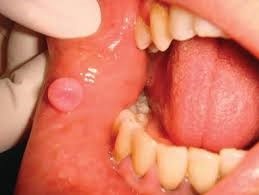
This pink nodule usually occurs in areas of chronic biting or friction, most commonly inside the lower lip or cheek. This lesion is benign and will at times appear to deflate, and then enlarge again with future biting. Mostly annoying in nature, the patient can elect to monitor or have it removed. Removal does not guarantee that another fibroma could form.
Apthous Ulcer
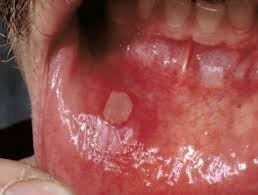
Commonly called canker sores, these ulcerations are the most common recurrent lesion in the mouth. They are the body’s immune response to stress, illness, and trauma, or are from spicy or acidic foods. Their appearance is round with a depressed center and they are usually found inside lips and cheeks. Ulcers usually resolve on their own, but warm salt water rinses ease the discomfort. For patients with frequent ulcers, selecting a toothpaste that does not contain Sodium Laurel Sulfate (SLS) could reduce the frequency.
Fever Blisters/ Cold Sores
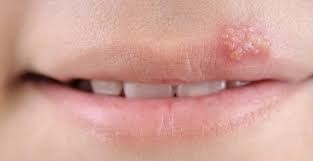
The recurrence of these lesions are due to stress, sunlight, fever, certain foods, trauma, or change in hormones. These lesions are actually recurrences of HSV-1. What starts as mild tingling, burning, or itching produces fluid filled blisters that when popped create an ulcer. Dental treatment is not recommended until the ulceration has dried and crusted over. This reduces the chance of spreading the virus to other mucous membranes. Topical over the counter and prescription ointments decrease healing time. Prescription oral antivirals are not curative, but lessen severity and duration of lesions for those with frequent outbreaks.
Lichen Planus
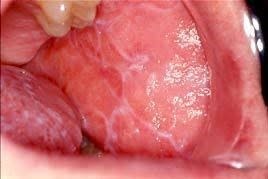
Lichen planus is a chronic immune system reaction that appears as a fine white lace-like pattern. It is most commonly found on the inside of the cheeks. This is most often asymptomatic and benign. Patients that experience burning or irritation when eating or brushing are prescribed a topical corticosteroid for pain management.
Geographic Tongue
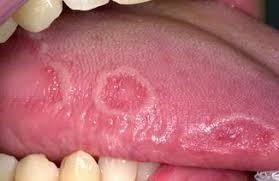
Also known as migratory glossitis, this inflammatory condition is named for the map-like appearance of the tongue. These “islands” are created by a central redness of atrophied taste buds surrounded by elevated white to yellow curved borders. The arrangement waxes and wanes and rearranges its pattern. While usually benign and asymptomatic, some experience burning when eating spicy or acidic foods.
Papilloma
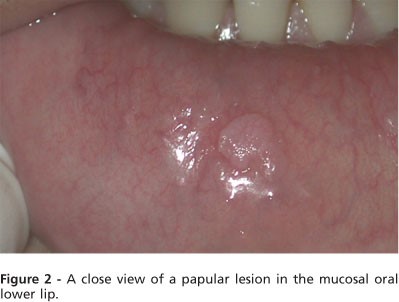
A papilloma is a firm, wart-like enlargement of epithelial tissue caused by a viral infection. These lesions are slow growing, painless, and often benign. Sometimes a biopsy is needed to confirm diagnosis.
Candidiasis
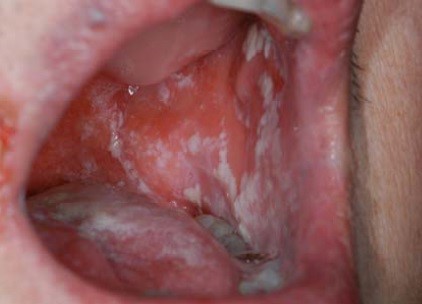
Also known as thrush, this overgrowth of candida albicans, aka yeast, is most frequently found on the tongue, palate, and inside of cheeks. These white patches are easily wiped off, revealing a red ulcerated surface. Factors that encourage this overgrowth are smoking, chemotherapy, diabetes, dry mouth, antibiotics, dentures, and corticosteroid inhaler use. This is treated with topical antifungal lozenges.
Angular Cheilitis
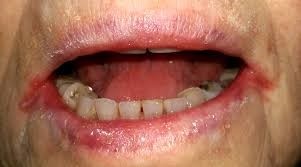
This superficial scaling at the corners of the mouth is also a fungal infection. The corners of the mouth collect saliva and dry out the top layer of skin creating small cracks. Licking these areas to soothe them creates warmth and moisture needed for fungus to grow and multiply. A topical antifungal ointment can be prescribed to treat the areas. Prevention by applying Vitamin E or petroleum jelly to form a barrier is most important to prevent reoccurrence.
Regular dental exams are the best way to evaluate your oral health. Should you notice a lesion present, please contact our office. Our goal is to determine a differential diagnosis and monitor the lesion. We want to ensure resolution of the lesion or recommend further follow-up with a biopsy.
Take great care of yourselves and your teeth! We look forward to seeing you in our office!